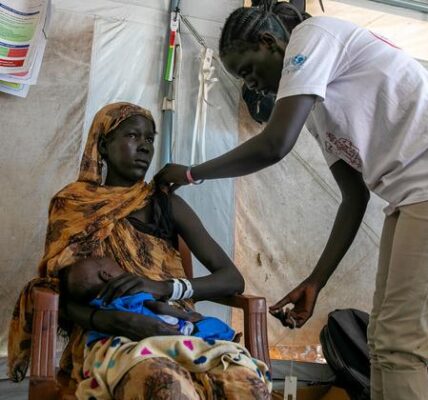The rise in civilian casualties in Ukraine and Myanmar is being fueled by an increase in the usage of land mines.
A recent report by a land-mine monitor revealed that the deployment of anti-personnel land mines in Ukraine and Myanmar by Russia and Myanmar, respectively, resulted in a significant increase in civilian casualties in these countries.
According to a report released by the International Campaign to Ban Landmines, Russia, who is not a member of the Mine Ban Treaty, has heavily utilized antipersonnel mines in Ukraine since their full-scale invasion of the country in February 2022.
The investigation uncovered proof that Ukraine, as a signatory of the Mine Ban Treaty, deployed anti-personnel mines in and around Izium, located in the Kharkiv region, during the time when the city was occupied by Russia in 2022.
Mark Hiznay, the associate director for arms at Human Rights Watch and editor of Landmine Monitor 2023, stated that there is a unique situation where a country not involved in the Mine Ban Treaty is utilizing the weapon within the territory of a member of the treaty. This has never happened before in the more than 20 years since the adoption of the Mine Ban Treaty.
Previously, Ukraine stated that it would investigate the allegations outlined in a Human Rights Watch report from earlier this year which documented “numerous cases” of Ukrainian forces using prohibited anti-personnel mines.
In 2022, the International Campaign to Ban Landmines, led by Human Rights Watch and made up of various nongovernmental organizations, documented 4,710 fatalities and injuries. This was a decrease from the 5,544 total casualties reported in the previous year.
According to Loren Persi, leader of the Landmine Monitor 2023 impact team, there were notable rises in certain countries, notably Ukraine. In Ukraine, the amount of reported civilian casualties rose by 10 times from approximately 60 in 2021 to around 600 in 2022.
According to the Monitor report, a large majority (85%) of those harmed by land mines and remaining explosives from past conflicts in the past year were non-combatants, with almost half being children. Syria had the most casualties at 834, followed by Ukraine with 608, and Yemen and Myanmar with over 500 each in 2022.
According to Hiznay, in 2014, Russia started deploying landmines to aid pro-Russian separatist groups in the disputed Donbas area of eastern Ukraine.
According to him, Russia has utilized land mines widely in locations such as Afghanistan and Chechnya. He believes that they have provided land mines to approximately 35-38 nations throughout the years.
“We have observed a correlation between the presence of Wagner and the presence of land mines,” he noted, in reference to the Wagner Group militia funded by Moscow. “This is not a mere coincidence, especially in Libya where various new types of land mines have been discovered and recorded.”
According to him, Myanmar has been employing anti-personnel landmines since 1999, but the extent and scale of the problem has now changed.
“It has simply grown in size,” he stated. “The government forces and nonstate armed groups are utilizing it more, making it a persistent and worsening issue during the recent reporting period.”
The report from the Monitor shows that land mines were utilized by non-state armed organizations in Colombia, India, Myanmar, Thailand, and Tunisia during the reporting period. They were also used by eight countries in the Sahel region who are members of the treaty.
As of now, a total of 164 nations have ratified the Mine Ban Treaty, which forbids the deployment, accumulation, creation, and transmission of anti-personnel mines.
According to the report, since the treaty was implemented in 1999, 30 states that are part of the agreement have successfully removed all mined areas from their land. However, there are still 60 countries and other locations that are affected by these dangerous weapons. Additionally, 22 states that did not sign the treaty and five other areas are still dealing with the presence of these deadly weapons.
Activists working to remove land mines are cautioning that the number of victims will keep increasing as long as the mines remain in the ground. They point out that there is insufficient funding for healthcare and physical rehabilitation services, leaving many disabled individuals without proper assistance. This issue is prevalent in countries like Afghanistan, Sudan, Ukraine, and Yemen.
Persi stated that there has been a concerning rise in the amount of innocent civilians who have been killed or hurt by newly planted landmines in various nations. This emphasizes the urgent requirement for additional funding to properly address the needs and rights of these victims.
Source: voanews.com




